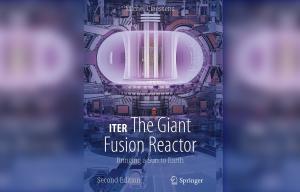"ITER: the Giant Fusion Reactor," second edition
The first edition of the book was published in mid-2019. The four years that followed were eventful for ITER: the advent of the Covid-19 pandemic; the coincident arrival of the first mega-components—gigantic magnets, the first pieces of the cryostat, and the first vacuum vessel sectors; the start of machine assembly; challenges in gaining regulatory approval for key project milestones; the discovery of component defects requiring repairs; the passing of Director-General Bernard Bigot followed by an intensive search and the appointment of Pietro Barabaschi as the new Director-General in October 2022; and the subsequent effort to reform the project and work toward an updated cost and schedule baseline. Given the significance of these events, it is no wonder that Claessens felt the need for a revision.
Yet the second edition is more than just an update; it also takes a shift in tone, largely for the positive. After leaving the ITER Organization in 2015, Claessens also worked for Fusion for Energy, ITER's European Domestic Agency, and for the European Commission Energy Directorate in Brussels. His experiences in all three organizations, combined with his continued observation of ITER and contact with others in the project, led him to become a vocal critic and eventually a self-described whistleblower, in some cases questioning the integrity of ITER officials and the correctness of their decisions. This perspective gave a darker quality to some of Claessens' accounts, but also added intrigue and a sharply personal tone.
With the new edition, including three additional chapters, Claessens sees "much improved information transparency" since the arrival of Director-General Barabaschi, particularly in relation to the frequent candid updates on ITER technology challenges and associated repairs. The tone of the new edition is largely positive, making clear that, however critical he may at times be, Claessens genuinely wants the ITER mission to succeed.
The ITER project is, above all, a human endeavour, its complexity derived not only from massive components and precisely engineered structures, but also from relationships between individuals. For readers seeking a solid historical account and a unique perspective from a writer who has lived both inside and outside the project, ITER: the Giant Fusion Reactor offers an absorbing read. Claessens does not shy away from controversy, which means not everyone will agree with his perspective or his conclusions; but that does not detract from making his work an engaging narrative.


